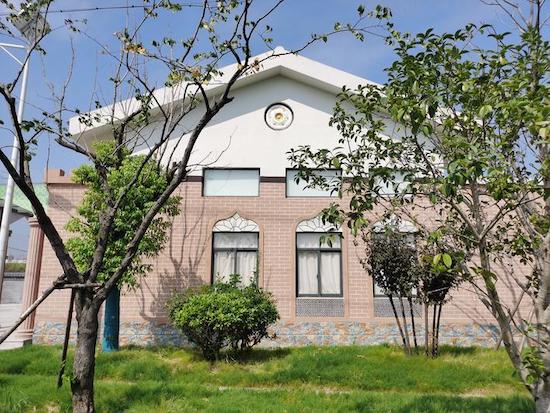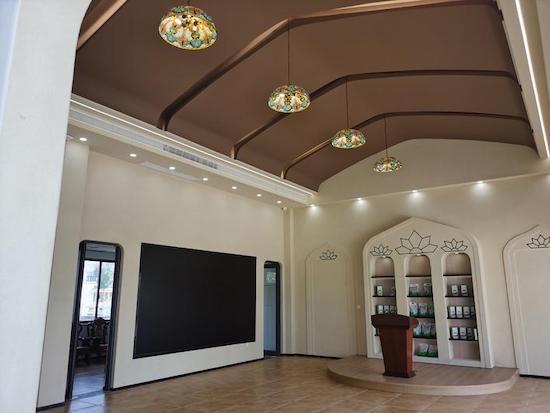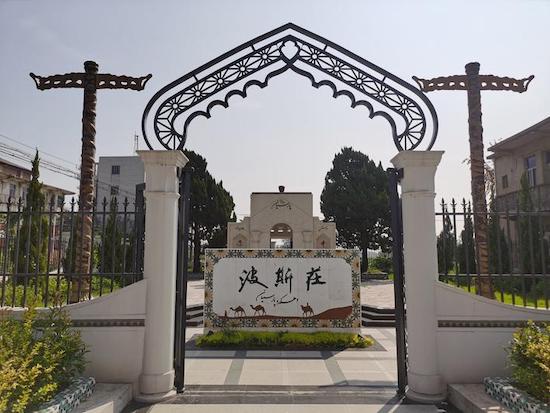A new cultural exchange center was recently erected in Persian village of Yangzhou, Jiangsu province, celebrating the historical ties of Yangzhou and Persia while enchanting visitors with the allures of Persian culture.
Spanning over 200 square meters, the center stands as a symbol of the enduring connection between these two distant lands. Its unique charm is evident in its distinctive dome design, intricate stained glass windows, and colorful glass lamps.

A new cultural exchange center is erected in Persian village, Yangzhou. [Photo/ourjiangsu.com]
At the core of the cultural hub lies a love story between a Persian merchant and a local girl from Yangzhou. During the Tang Dynasty (618-907), numerous Persian merchants journeyed along the Maritime Silk Road to Yangzhou to engage in trade. One young merchant, who fell ill in the village, found solace in the care of the local Guo family. Over time, he fell in love with the Guo family's daughter, leading to a marriage that bridged cultures and hearts.
This romantic tale resonated with the merchant's homeland, inspiring a wave of young Persians to follow his path to Yangzhou. These pioneers settled in the village, mingling with the local community and laying the foundation for a lineage of Persian descendants. Today, over 100 households of the "Li" (Chinese: 佴) surname proudly trace their roots back to these early Persian settlers.

The interior of the newly-built cultural exchange center in Persian village, Yangzhou. [Photo/ourjiangsu.com]
The very name "Persian village" carries within it a tale of valor and sacrifice. A gallant Persian merchant, having made the village his home, bravely led the villagers in their fight against marauding bandits, ultimately giving his life to protect the community. In his honor, the village was renamed Persian village, with a solemn monument erected to commemorate his selfless act.

The renovated Persian Village Memorial Garden in Yangzhou, with a monument inscribed in both Chinese and Persian script. [Photo/ourjiangsu.com]
Today, as visitors wander through the village, they are greeted by a tapestry of Persian cultural elements, from ancient stone pillars to exquisite carvings and dialects that echo a bygone era. The village market teems with shops bearing Persian names, a testament to the enduring influence of Persian culture on the local community.
The village's cultural richness has not gone unnoticed, attracting scholars, students, and curious travelers from around the globe. Visitors from Iran, Pakistan, Colombia, Uzbekistan, and beyond have flocked to the village, drawn by its rich history and warm hospitality.
Looking ahead, the Persian village envisions the creation of a vibrant Persian cultural park that will serve as a hub for eco-tourism, leisurely exploration, and cross-cultural exchange. This initiative seeks to deepen ties with countries involved in the Belt and Road Initiative, fostering a spirit of friendship and understanding that transcends borders and generations.